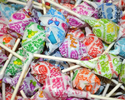Externet
Well-Known Member
Hi. Has anyone worked/done something with it ?
Never done it, never seen it done and am clumsy enough to fail at anything with the fragility of gold leaf.
First, is there several thicknesses to increase my chance of not breaking the foil by choosing a thicker one ?
I have to make several "lollipop wrappers" ~25mm without the lollipop, just the stick, using gold foil, and fit it inside half a sphere.
Any guidance please ?

Never done it, never seen it done and am clumsy enough to fail at anything with the fragility of gold leaf.
First, is there several thicknesses to increase my chance of not breaking the foil by choosing a thicker one ?
I have to make several "lollipop wrappers" ~25mm without the lollipop, just the stick, using gold foil, and fit it inside half a sphere.
Any guidance please ?
Attachments
Last edited:


